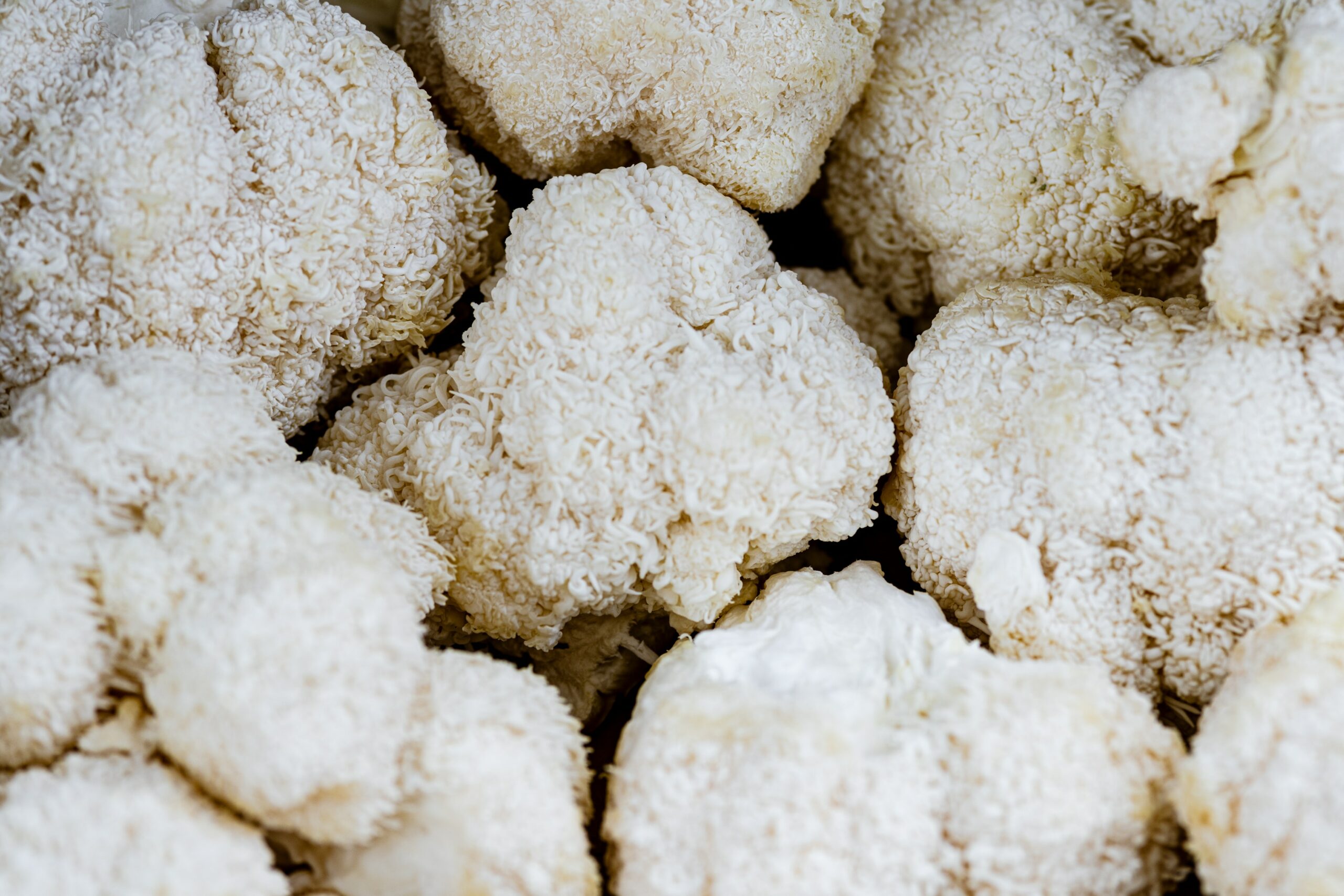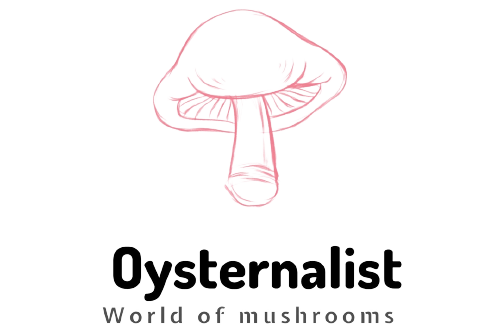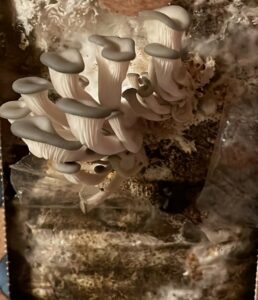Lion’s Mane Mushroom, also known as bear’s head, Yamabushitake, hedgehog mushroom, and sheep’s head is an edible fungus that has been used for centuries in Eastern medicine. This large white fungus gets its name from its hairy spines that resemble a lion’s mane. While it may look unappetizing, this mushroom is actually quite delicious and nutritious.
Lion’s Mane Mushroom is a good source of antioxidants, polysaccharides, and hericystin. This fungus has been shown to boost cognitive function and memory, improve joint pain, and reduce inflammation. Lion’s Mane Mushroom is also thought to have anti-cancer properties.
If you are looking for an unusual but tasty addition to your diet, Lion’s Mane Mushroom is definitely worth trying!
What Are the Benefits of Lion’s Mane Mushroom?
Here are the top 7 benefits of Lion’s Mane Mushroom:
1. Boosts cognitive function and memory: One of the most well-known benefits of Lion’s Mane Mushroom is its ability to improve cognitive function and memory. This is due to the presence of compounds like Ergothioneine and hericystin, which have been shown to protect nerve cells from damage.
2. Improves joint pain: If you suffer from joint pain, Lion’s Mane Mushroom may be able to help. This fungus contains compounds that can reduce inflammation and polysaccharides that can promote the repair of cartilage tissue.
3. Reduces inflammation: Inflammation is a major factor in many chronic diseases, such as heart disease and arthritis. Lion’s Mane Mushroom has anti-inflammatory properties that may help to reduce your risk of these conditions.
4. Boosts immune system: Lion’s Mane Mushroom is a rich source of polysaccharides, which are known to boost the immune system. This can help to protect you from diseases and infections.
5. Anti-cancer properties: Some studies have shown that Lion’s Mane Mushroom has anti-cancer properties. This is due to the presence of compounds like hericystin and Ergothioneine, which can inhibit the growth of cancer cells.
6. Improves digestion: Lion’s Mane Mushroom contains enzymes that can help to improve digestion. This can help to reduce bloating, gas, and other digestive problems.
7. Fights fatigue: If you are feeling fatigued, Lion’s Mane Mushroom may be able to help. This fungus contains compounds that can improve energy levels and reduce fatigue.
As you can see, Lion’s Mane Mushroom is a powerful fungus with many health benefits. Of course, consulting with a healthcare professional is always recommended before adding any new supplement to your diet.
Among all the edible mushrooms, Lion’s Mane Mushroom is one of the most interesting and beneficial.
Can Lion’s Mane Mushroom Be Eaten Raw?
In general, it can be eaten raw, cooked, or dried. When eaten raw, it has a crunchy texture and a mild taste. It can also be used as an ingredient in soups, stews, and other dishes.
If you plan to eat it raw, it’s best to look for Lion’s Mane Mushroom which has been specifically grown for human consumption. This type of mushroom is typically free of harmful toxins and impurities.
It’s also important to wash Lion’s Mane Mushroom thoroughly before eating it raw. This will help to remove any dirt, bacteria, or other contaminants that may be present on the surface of the mushroom.
As with any food, there is always a risk of food poisoning when eating raw Lion’s Mane mushrooms. This risk can be minimized by ensuring that the mushrooms are fresh and free of contaminants. If you have any concerns, it’s best to cook the mushrooms before consuming them.
How to Add Lion’s Mane Mushroom to Your Diet:
If you want to experience the benefits of Lion’s Mane Mushroom, there are several ways you can add it to your diet:
1. Add it to soups and stews: Lion’s Mane Mushroom goes well in soups and stews. Simply add some sliced mushrooms to your favorite recipe.
2. Sauté it: Sautéed Lion’s Mane Mushroom makes a great side dish. Simply sauté the mushrooms in a little olive oil or butter until they are cooked to your liking.
3. Make tea: Lion’s Mane Mushroom can also be made into tea. To do this, simply simmer some sliced mushrooms in water for 10 minutes. Then, strain the mixture and enjoy your tea.
4. Take a supplement: If you don’t like the taste of mushrooms, you can also take a Lion’s Mane Mushroom supplement. These supplements are typically made from dried and powdered mushrooms.
No matter how you choose to consume it, Lion’s Mane Mushroom is a delicious and nutritious addition to your diet.
How Do You Know if a Lion’s Mane Is Bad?
If you’re lucky enough to find fresh lion’s mane mushrooms, there are a few ways to tell if they’re still good. For one, the mushroom should be white or cream-colored with no brown spots. The flesh should be firm, and the stem should be white and slightly sticky to the touch. If any of these things are not true, it’s best to throw the mushroom out.
Another way to tell if a lion’s mane is bad is by smell. Lion’s mane mushrooms have a mild, earthy smell that shouldn’t be too strong. If the mushroom smells sour or unpleasant, it’s probably not good anymore.
If you’re not sure whether or not your lion’s mane is still good, it’s always better to stay on the safe side and throw it out. Eating a bad mushroom can cause stomach upset and other unpleasant symptoms.
What Does Lion’s Mane Mushroom Taste Like?
Lion’s mane mushrooms have a mild, earthy flavor that is similar to seafood. When cooked, the texture of the mushroom is also similar to seafood. It has a slightly chewy texture with a bit of a crunch.
Lion’s mane mushrooms are often used as a substitute for crab, lobster, and scallops. They can be used in any recipe that calls for these ingredients. Lion’s mane mushrooms are also good on their own, grilled or roasted.
If you’ve never had lion’s mane mushrooms before, it’s best to start with a small amount. Some people find the taste and texture to be too strong. Once you’ve tried it, you can decide if you like it and how much you want to use it in future recipes.
Can Lion’s Mane Make You Sick?
Lion’s mane mushrooms are safe to eat when they’re cooked properly. However, eating raw or undercooked lion’s mane mushrooms can cause stomach upset and other symptoms.
If you’re allergic to certain foods like seafood or other mushrooms, you may also be allergic to lion’s mane mushrooms. Symptoms of an allergic reaction include itching, swelling, and difficulty breathing. If you have a severe allergic reaction, you may need to go to the hospital.
It’s also important to only buy fresh lion’s mane mushrooms from a reputable source. Buying from a shady dealer could result in getting sick from eating bad mushrooms. Also, storing the mushrooms properly is important to prevent them from going bad.
If you’re concerned about getting sick from eating lion’s mane mushrooms, it’s best to talk to your doctor before trying them. They can advise you on the risks and help you decide if they’re right for you.
Are There Any Side Effects of Lion’s Mane Mushroom?
Like most earth-natural food and supplements, there is always the potential for side effects. The most common side effect associated with lion’s mane mushrooms is an upset stomach. This can be avoided by trying it first and making sure you are not sensitive to it. If you plan to consume it as a supplement, make sure to read the dosage instructions carefully.
Other potential side effects may include:
- Dizziness
- Nausea
- Headache
- Diarrhea
These side effects are normally mild and temporary. If you experience any of these side effects, stop taking lion’s mane and see a doctor if they persist. Lion’s mane is considered safe for most people, but as with anything, it’s always best to speak with a healthcare professional before adding it to your diet.
If you are pregnant or breastfeeding, it is best to avoid taking any supplements without first consulting your doctor. As with any new supplement, it’s always best to start with a small dosage and increase gradually as needed.
Lion’s mane is a powerful mushroom with many potential health benefits (here are the top 9 healthy mushrooms). It’s important to remember that not all supplements are not regulated by the FDA and it’s always best to speak with your doctor before taking any new supplement. Lion’s mane is generally considered safe for most people, but there is always the potential for side effects. Start with a small dosage and increase gradually as needed. If you experience any side effects, stop taking lion’s mane and see a doctor if they persist.
Where Can I Find Lion’s Mane Mushroom?
Lion’s mane mushroom grows in the wild on dead or dying hardwood trees. It is most commonly found on beech and maple trees. While it can be found in other parts of the world, it is most common in North America and Asia.
If you’re lucky enough to find some lion’s mane in the wild, you can harvest it yourself. But be warned – it can be quite difficult to identify. Make sure you have a good guidebook or an experienced friend with you to help you out.
If you’d rather not go hunting for your own mushrooms, you can also purchase them online or at some health food stores.
What Does Lion’s Mane Mushroom Look Like?
Lion’s mane mushroom is a white, fleshy fungus that resembles a hairy caterpillar. It gets its name from its resemblance to a lion’s mane. The “hairs” on the surface of the mushroom are actually spore-bearing structures called gills.
When young, the mushroom is enclosed in a white egg-like sac. This sac eventually bursts open, revealing the spore-bearing gills. The gills are what produce the spores that will grow into new mushrooms.
As the mushroom matures, it will develop a brownish color and the gills will become black. At this stage, it is no longer edible.
How to Grow Lion’s Mane Mushroom?
Lion’s mane mushroom is not difficult to grow, but it does require some special care. The mushroom prefers cooler temperatures and lots of moisture.
This means that it is best to grow them in the spring or fall when the weather is cooler and there is more rainfall.
To start growing your own lion’s mane mushrooms, you will need to purchase a culture or spores from an online retailer. You can also find these at some health food stores.
The equipment you’ll need:
1. An aquarium or terrarium
2. A humidity dome
3. Perlite
4. Potting soil
5. Lion’s mane mushroom spores or culture
Instructions:
1. Fill your aquarium or terrarium with perlite and moisten it with water until it is evenly damp but not soggy.
2. Add a layer of potting soil on top of the perlite.
3. If you are using a culture, place it in the center of the soil. If you are using spores, sprinkle them over the surface of the soil.
4. Place the Humidity Dome over the top of the aquarium or terrarium.
5. Place the container in a location that is out of direct sunlight and where the temperature will remain between 60-70 degrees Fahrenheit.
6. Mist the inside of the humidity dome with water daily to keep the environment moist.
7. After about 2 weeks, you should see the first signs of growth. Continue to mist the inside of the dome daily and do not allow the soil to dry out.
8. Once the mushrooms have reached maturity, they can be harvested. Cut them at the base of the stem with a sharp knife.
9. Allow the spores to fall from the gills onto fresh potting soil to start a new crop.
10. Store any excess mushrooms in a paper bag in the refrigerator where they will keep for up to 2 weeks.
Growing this mushroom at home is very rewarding and not as challenging as some might think. With a little bit of care, you can have a never-ending supply of delicious and nutritious mushrooms.
How Do You Clean Lion’s Mane Mushrooms?
Cleaning lion’s mane mushrooms are very simple. Just rinse them off with cool water to remove any dirt or debris. If they are particularly dirty, you can soak them in a bowl of cool water for 10-15 minutes before rinsing.
Do not use soap or detergent as this can damage the delicate mushroom.
How to Cook Lion’s Mane Mushroom?
Lion’s mane mushrooms can be used in any recipe that calls for mushrooms. They have a mild flavor that is slightly sweet and earthy.
They can be cooked in a variety of ways including sautéed, grilled, roasted, or even raw in salads. Lion’s mane mushrooms are also a popular ingredient in vegan and vegetarian dishes.
When cooking with lion’s mane mushrooms, it is important to remember that they will release a lot of moisture. This can make them difficult to cook if you are not careful.
To avoid this problem, cook them over high heat or add them near the end of the cooking process. Some people like the juicy texture that the mushrooms create, while others prefer to cook them until they are dry and crispy.
How to Freeze Lion’s Mane Mushroom?
Lion’s mane mushrooms can be frozen whole or sliced. To freeze whole mushrooms, simply place them on a baking sheet lined with parchment paper and flash freeze for 2-3 hours.
Once they are frozen solid, transfer them to a freezer-safe bag or container. Sliced mushrooms can be placed in a freezer-safe bag without flash freezing first.
When you are ready to use the mushrooms, there is no need to thaw them first. Simply cook them frozen using your favorite recipe.
Is Lion’s Mane Mushroom Safe for Dogs?
Yes, lion’s mane mushroom is safe for dogs. These edible mushrooms contain antioxidants and anti-inflammatory properties that can be beneficial for your dog’s health.
Lion’s mane mushrooms can be given to your dog whole or sliced. You can also find them dried, powdered, or in supplement form at most pet stores.
When feeding your dog mushrooms, it is important to start with a small amount to see how they react. Some dogs may have an allergic reaction to mushrooms, so it is always best to err on the side of caution.
If you notice any adverse reactions after feeding your dog mushrooms, discontinue use immediately and contact your veterinarian.
Lion’s mane vs. Oyster Mushrooms comparison table
| Oyster Mushroom | Lion’s Mane Mushroom | |
| Scientific Name | Pleurotus ostreatus | Hericium Erinaceus |
| Habitat | native to North America, Europe, and Asia. They typically grow on hardwoods, such as oak and maple | native to Europe and North America. They typically grow on dead or dying hardwood trees |
| Shape | oyster-shaped cap with a short stem. The caps can range in color from white to grey to brown. | distinctive spherical shape with long, cascading spines. The spines can range in color from white to cream to yellowish-brown. |
| Size | can range in size from 2 to 6 inches wide | can range in size from 2 to 8 inches in diameter |
| Texture | a soft, velvety texture. When cooked, they absorb liquid and take on a slightly chewy consistency | a firm, meaty texture. When cooked, they tend to release a lot of moisture |
| Flavor | mild, slightly sweet flavor with hints of anise and seaweed | mild seafood with a slightly sweet, earthy flavor |
| Nutritional Value | good source of protein, fiber, and essential vitamins and minerals. They also contain compounds that may boost the immune system | known for their cognitive-boosting properties. They are a good source of fiber, protein, and essential vitamins and minerals |
| Safety | safe for most people to eat | safe for most people to eat |
Both lion’s mane mushrooms and oyster mushrooms are safe for most people to eat and offer a variety of nutritional benefits. In terms of taste and cooking, these two mushrooms are quite different. Nutritionally, Lion’s mane mushrooms may be better for cognitive health, while oyster mushrooms may be better for boosting the immune system. When choosing between the two, it really comes down to personal preference. Try both and see which you like best!








